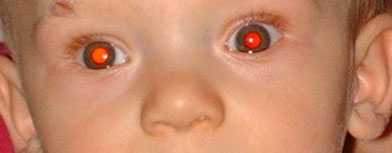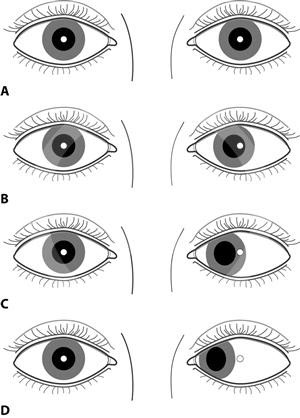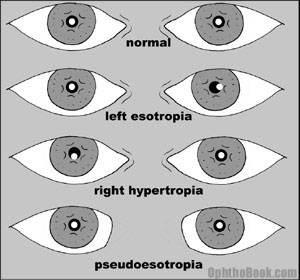Hirschberg Reflex refers to the light reflection off of the cornea, used to test determine if the eyes are in alignment
The test is done by shining a penlight or direct ophthalmoscope directly between the two eyes of the client from about 2 feet. The examiner is positioned directly behind the light source. If eyes are properly aligned, the reflection will be slightly nasal to central in each eye.
If an eye is turned in (esotropia), the reflection will be central to more temporal that the reflection in the fixating eye.
If one eye is turned out (exotropia), the reflection will be more nasal than the reflection in the fixating eye.
A photorefractive camera is an excellent way to test for and document Hirschberg Reflex.
In general, for every mm that the light is decentered, the eye is turned about 15 diopters (7 degrees from center).
The refex of the right eye is slightly nasal to central (fixating eye). The reflex of the left eye is central indicating a small angle esotropia.
The reflex of the left eye is slightly nasal to central indicating the fixating eye. The reflex is very nasal in the right eye indicating a large angle exotropia.



